As we roll up to Wanuskewin Heritage Park 5km northwest of Saskatoon, the skies are moody. There’s a foreboding black cloud to the east, the air is uncharacteristically damp, and my Weather Network app tells me it will be 4 degrees overnight. I’m not a camper by any stretch of the imagination, and, admittedly, the prospect of spending the night in a tipi is not one that excites me on the best of days, but as we gather our gear and the rain starts to fall, a feeling approaching dread comes over me. If indigenous peoples could live this way for thousands of years, sans the modern comforts of the Canadian Tire camping section, surely I can do it for one night, I coach myself.
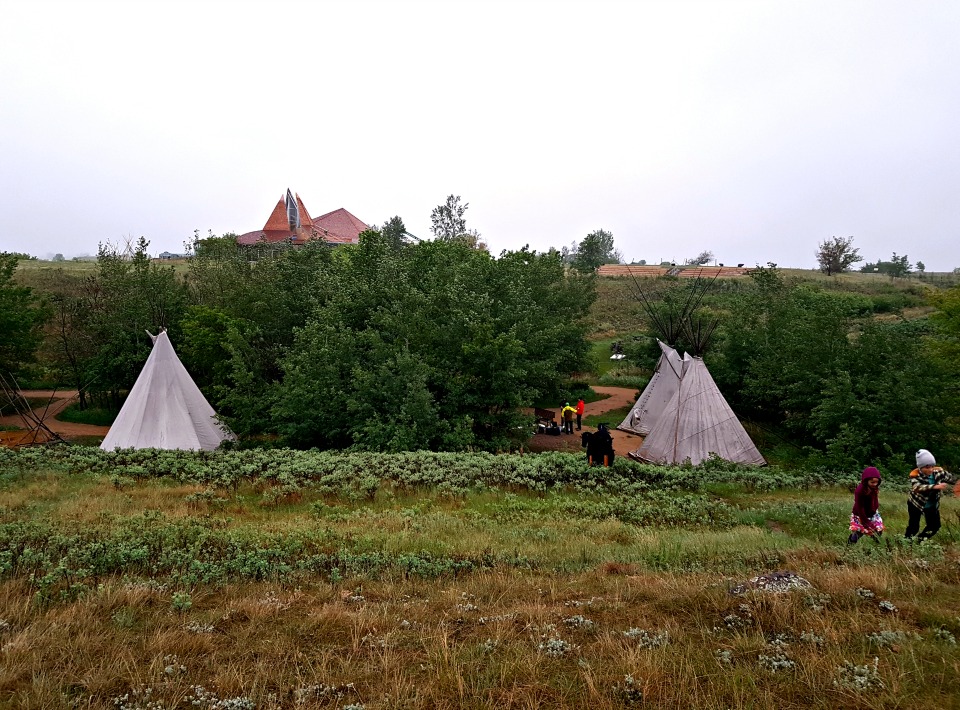 My apprehension is tempered by the palpable excitement of my kids who are quite literally whooping their way down the path towards four enormous tipis tucked cosily into a shallow coulee a couple of hundred metres from the road. I note as we settle our things into our overnight abode that there is a gaping hole in the top of the tipi and I silently thank God that at least the cold temperatures will be inhospitable to mosquitoes.
My apprehension is tempered by the palpable excitement of my kids who are quite literally whooping their way down the path towards four enormous tipis tucked cosily into a shallow coulee a couple of hundred metres from the road. I note as we settle our things into our overnight abode that there is a gaping hole in the top of the tipi and I silently thank God that at least the cold temperatures will be inhospitable to mosquitoes.
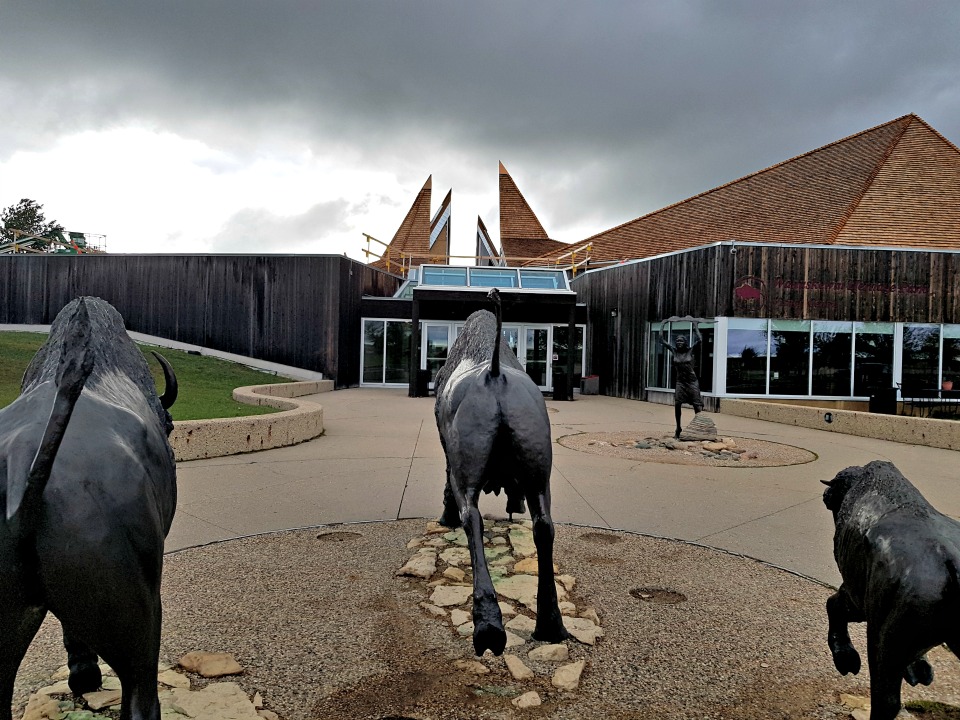 After a quick bite to eat around a fledgeling campfire that smoulders and smokes against the misty evening, we head up to the interpretive centre to meet our fresh-faced guide, Zach. He sets the stage beautifully for an evening filled with wonder by directing us to a point just outside the entrance to the interpretive centre where he stops and tells us the story of Wanuskewin. Cree for ‘being at peace with oneself,’ wânaskêwin (ᐋᐧᓇᐢᑫᐃᐧᐣ), as a place of historical significance, dates back an estimated 6000 years.
After a quick bite to eat around a fledgeling campfire that smoulders and smokes against the misty evening, we head up to the interpretive centre to meet our fresh-faced guide, Zach. He sets the stage beautifully for an evening filled with wonder by directing us to a point just outside the entrance to the interpretive centre where he stops and tells us the story of Wanuskewin. Cree for ‘being at peace with oneself,’ wânaskêwin (ᐋᐧᓇᐢᑫᐃᐧᐣ), as a place of historical significance, dates back an estimated 6000 years.
The Opimihaw Creek Valley region is home to 19 archaeological dig sites, evidence from which it can be determined that virtually every pre-contact cultural group in the Great Plains visited the area during this time. Zach points over the peaks of the interpretive centre and informs us that the ground on which we are standing would for thousands of years have been the stage for an incredible scene. Herds of buffalo, directed by the clever plots of the brave plains people, were stampeded over the earth beneath our feet and off the cliff to certain death just beyond the points he indicated. Their flesh would provide nourishment, their hides were used to make shelter, and their bones were carved to create tools and weapons. Standing there between a parking lot and a state-of-the-art interpretive centre in a Gortex jacket, this vision gives me pause. My initial dread of the experience in front of me falls away giving way to an incredibly humbling feeling of the smallness of my place in time and space.
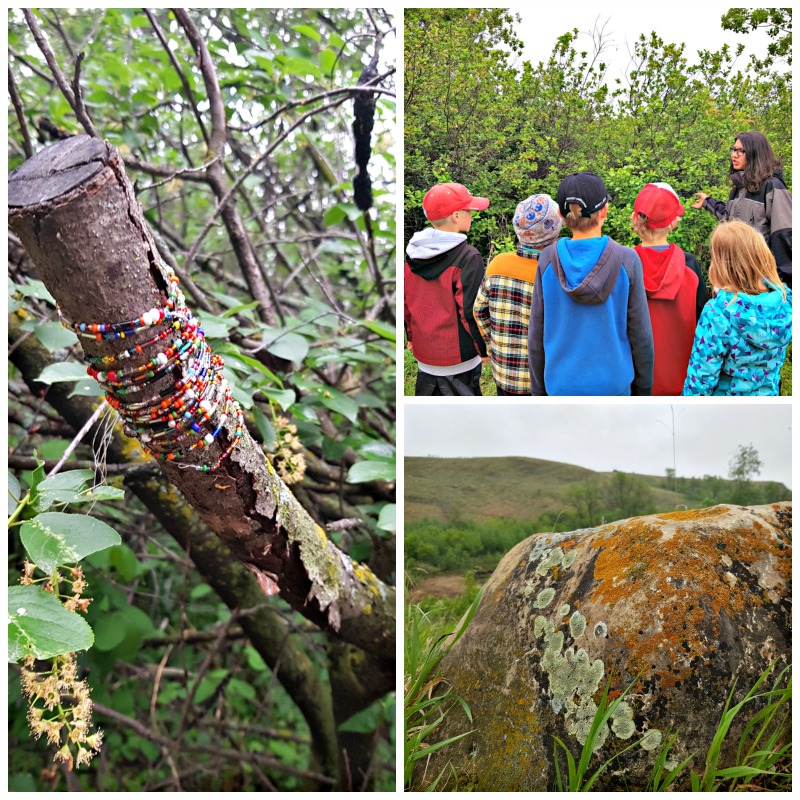 This sentiment only intensifies as we embark on our first activity of the evening–a medicine walk. Zach takes us to Wanuskewin’s arguably most significant archaeological site. The medicine wheel, a ring of sizable rocks surrounding a smaller central stone cairn, he tells us, served as a communal gathering place for ceremonial activities and symbolises the union of the intellectual, emotional, physical and spiritual dimensions of health. As we walk on, it strikes me just how unassuming this landscape of such rich historical and cultural significance is. There is little, if any, evidence of the powerful facets of the thousands of years of living (and dying) that took place here. After a fascinating tour of medicinal plants native to the area, we find ourselves at the bottom of the very cliff where hundreds if not thousands of bison perished over millennia. The cliff itself is barely distinguishable through the suddenly very dense greenery. Zach tells us that this change in foliage is due to the volumes of precious blood that were shed here. A few metres away he points to a clearing where tribal peoples would have processed every last part of the enormous beasts. To the naked eye, there is only green grass.
This sentiment only intensifies as we embark on our first activity of the evening–a medicine walk. Zach takes us to Wanuskewin’s arguably most significant archaeological site. The medicine wheel, a ring of sizable rocks surrounding a smaller central stone cairn, he tells us, served as a communal gathering place for ceremonial activities and symbolises the union of the intellectual, emotional, physical and spiritual dimensions of health. As we walk on, it strikes me just how unassuming this landscape of such rich historical and cultural significance is. There is little, if any, evidence of the powerful facets of the thousands of years of living (and dying) that took place here. After a fascinating tour of medicinal plants native to the area, we find ourselves at the bottom of the very cliff where hundreds if not thousands of bison perished over millennia. The cliff itself is barely distinguishable through the suddenly very dense greenery. Zach tells us that this change in foliage is due to the volumes of precious blood that were shed here. A few metres away he points to a clearing where tribal peoples would have processed every last part of the enormous beasts. To the naked eye, there is only green grass.
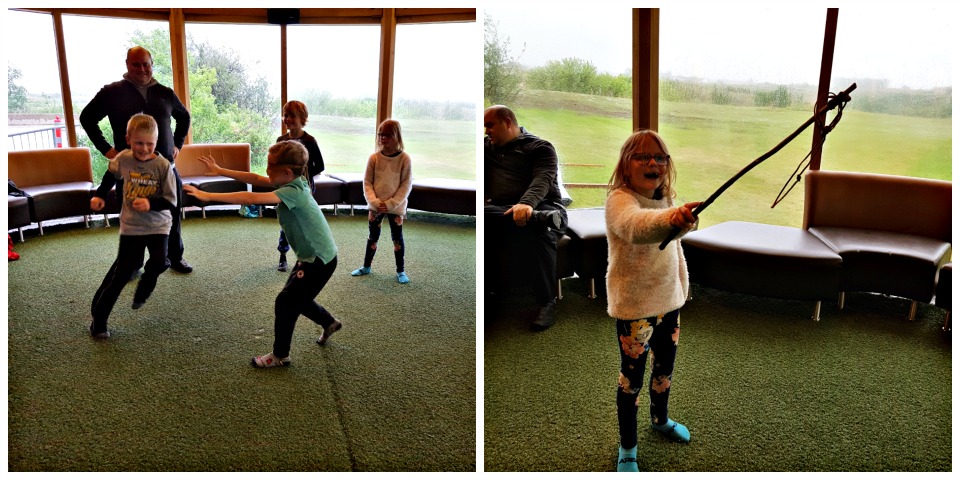 Our walk ends back at the interpretive centre where my kids erect a tipi under Zach’s skilful tutelage and follow it up by playing a few traditional games. As I watch them spearing a hoop (think cup and ball) and playing a rousing game of predator and prey, rain trickles down the windows behind us, and I am guiltily grateful for the brief respite from the elements. We conclude our evening’s activities with a snack of a traditional flatbread known as bannock and a cup of (not-so-traditional) hot chocolate. We enjoy the last of our day’s luxuries by brushing our teeth with running water and having a last-minute toilet break before making our way to our tipis for a night’s sleep.
Our walk ends back at the interpretive centre where my kids erect a tipi under Zach’s skilful tutelage and follow it up by playing a few traditional games. As I watch them spearing a hoop (think cup and ball) and playing a rousing game of predator and prey, rain trickles down the windows behind us, and I am guiltily grateful for the brief respite from the elements. We conclude our evening’s activities with a snack of a traditional flatbread known as bannock and a cup of (not-so-traditional) hot chocolate. We enjoy the last of our day’s luxuries by brushing our teeth with running water and having a last-minute toilet break before making our way to our tipis for a night’s sleep.
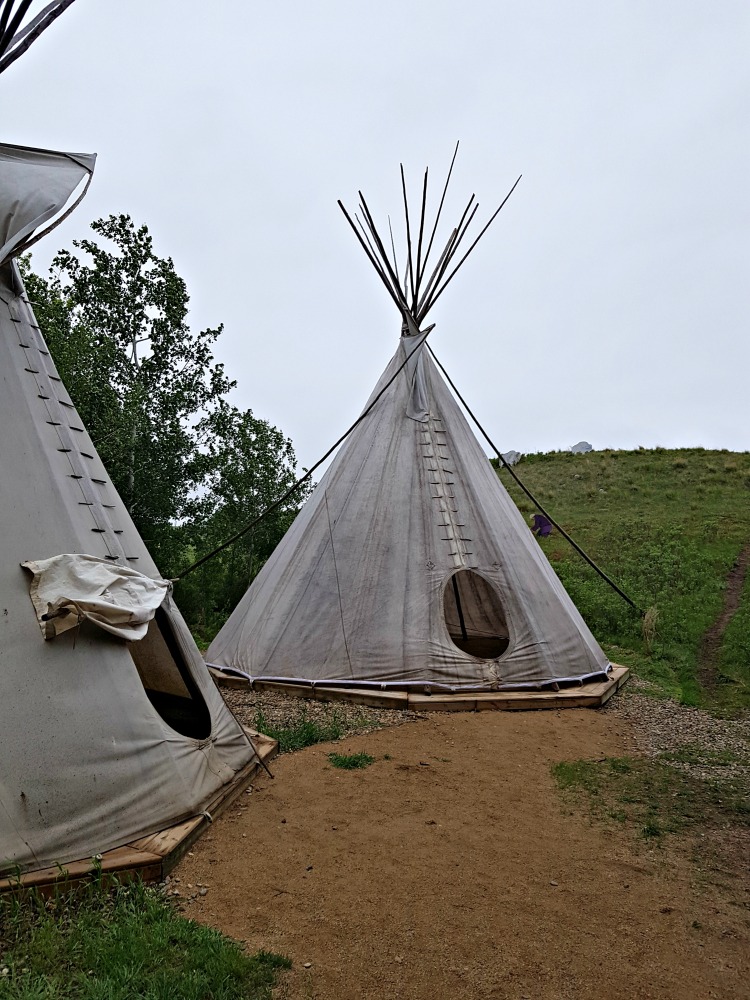 There is little visiting amongst campers because by this time it is raining quite heavily and, without a fire, there is only what little light remains from the falling sun. This does nothing to deter the spirits of my kids who giggle and shuffle around noisily in their sleeping bags which, thankfully, will stay dry all night. As they drift off, I tell them a few stories and listen as the rustle of their sleeping bags lessens and finally stops. Then I enjoy the kind of silence that only nature can bestow–fresh, open and, on this night, broken only by the gentle tip tapping of the rain on the canvas. In the cool night air, I let my mind wander to times past, to families huddled together under structures just like this one, to the steadfastness of the stars, the air, and the earth, and the timelessness of moments just like this one.
There is little visiting amongst campers because by this time it is raining quite heavily and, without a fire, there is only what little light remains from the falling sun. This does nothing to deter the spirits of my kids who giggle and shuffle around noisily in their sleeping bags which, thankfully, will stay dry all night. As they drift off, I tell them a few stories and listen as the rustle of their sleeping bags lessens and finally stops. Then I enjoy the kind of silence that only nature can bestow–fresh, open and, on this night, broken only by the gentle tip tapping of the rain on the canvas. In the cool night air, I let my mind wander to times past, to families huddled together under structures just like this one, to the steadfastness of the stars, the air, and the earth, and the timelessness of moments just like this one.
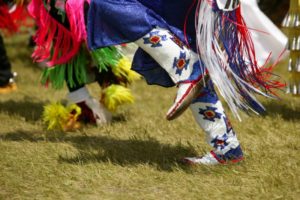
Photo Credit: Credit: Tourism Saskatchewan/Kevin Hogarth Photography
With special thanks to Tourism Saskatchewan, Wanuskewin Heritage Park, and the fantastic Zach for an experience our family will never forget. For more information on tipi sleepovers, visit www.wanuskewin.com/discover/tipi-sleepovers/.



